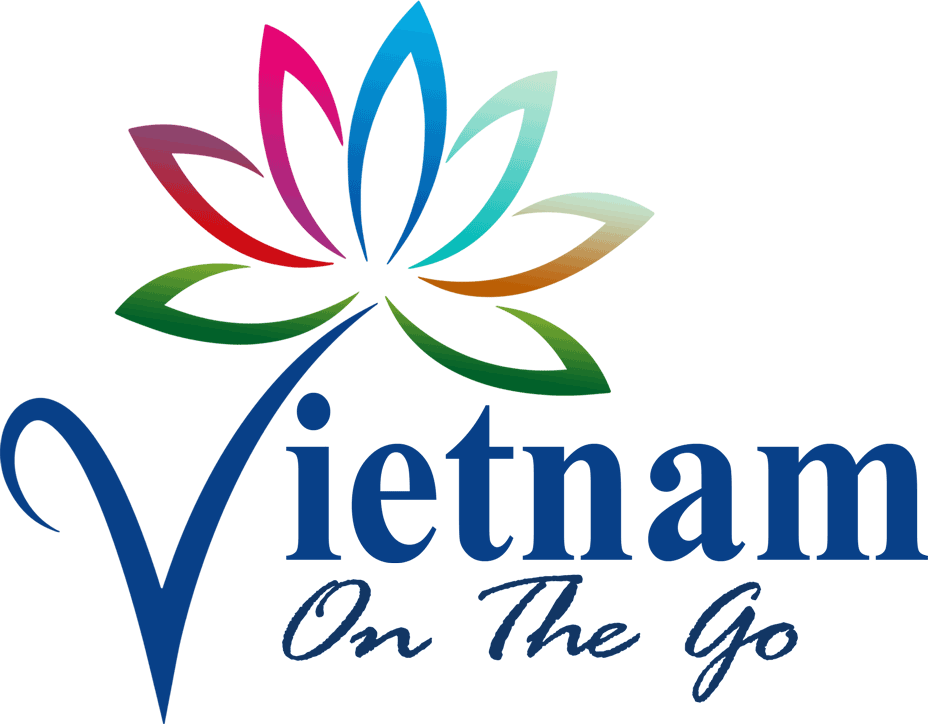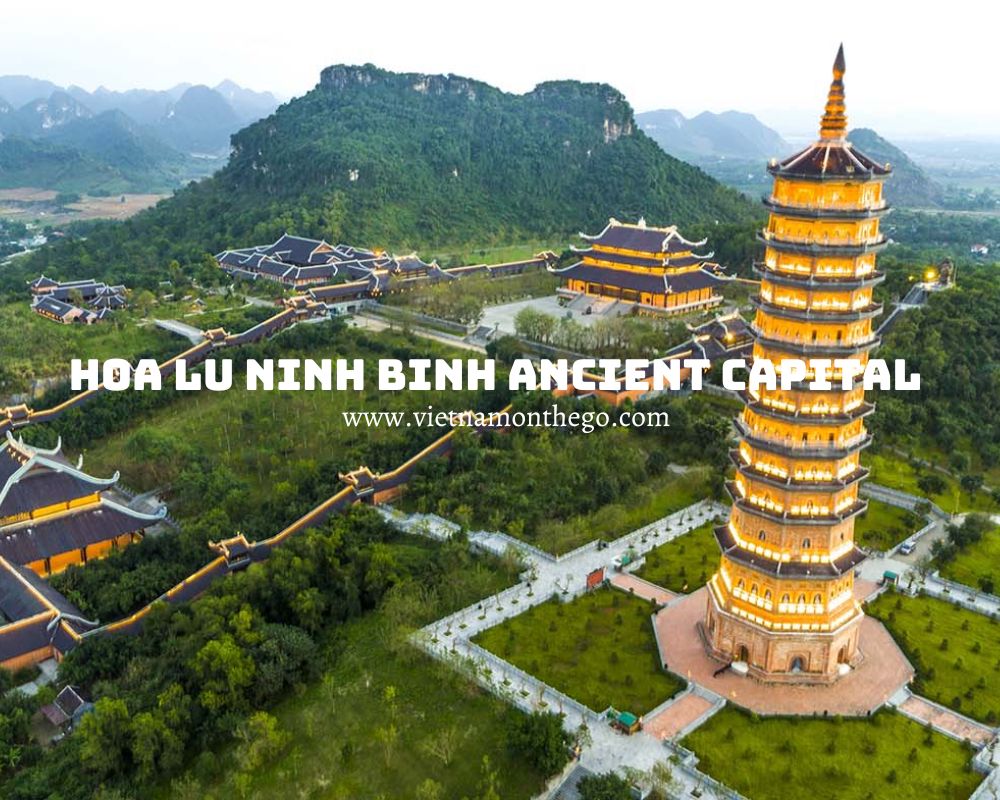Travel Guide, Ninh Binh
Explore the Rich History of Hoa Lu Ninh Binh Ancient Capital
Tucked away in the lush landscapes of Ninh Binh Province lies Hoa Lu, a place where history whispers from the ruins and nature’s beauty unfolds at every turn. This Hoa Lu Ninh Binh ancient capital of Vietnam, reigning supreme in the 10th and 11th centuries, stands as a testament to a period rich in culture, power, and architectural ingenuity. Today, Hoa Lu offers more than just a peek into the country’s glorious past; it serves as a bridge connecting the present with the tales of emperors, battles, and the enduring spirit of the Vietnamese people.
As we explore the remnants of this once-thriving citadel, surrounded by the breathtaking beauty of limestone karsts and vibrant greenery, we embark on a journey that transcends time, inviting us to marvel at the legacy left behind by Vietnam’s ancient rulers.
Hoa Lu Ninh Binh ancient capital map
Address: Truong Yen commune, Hoa Lu district, Ninh Binh province
Covering an impressive area of 300 hectares with architecturally significant structures of high cultural and historical value, along with charming natural landscapes, Ninh Binh Hoa Lu Ancient Capital is one of the four core areas within the Trang An Scenic Landscape Complex. It was officially recognized by UNESCO as the first and only dual cultural heritage site in Southeast Asia in 2014. The ancient capital is also one of the most beloved tourist destinations in Ninh Binh province today.
Highlights of Ninh Binh Hoa Lu Ancient Capital
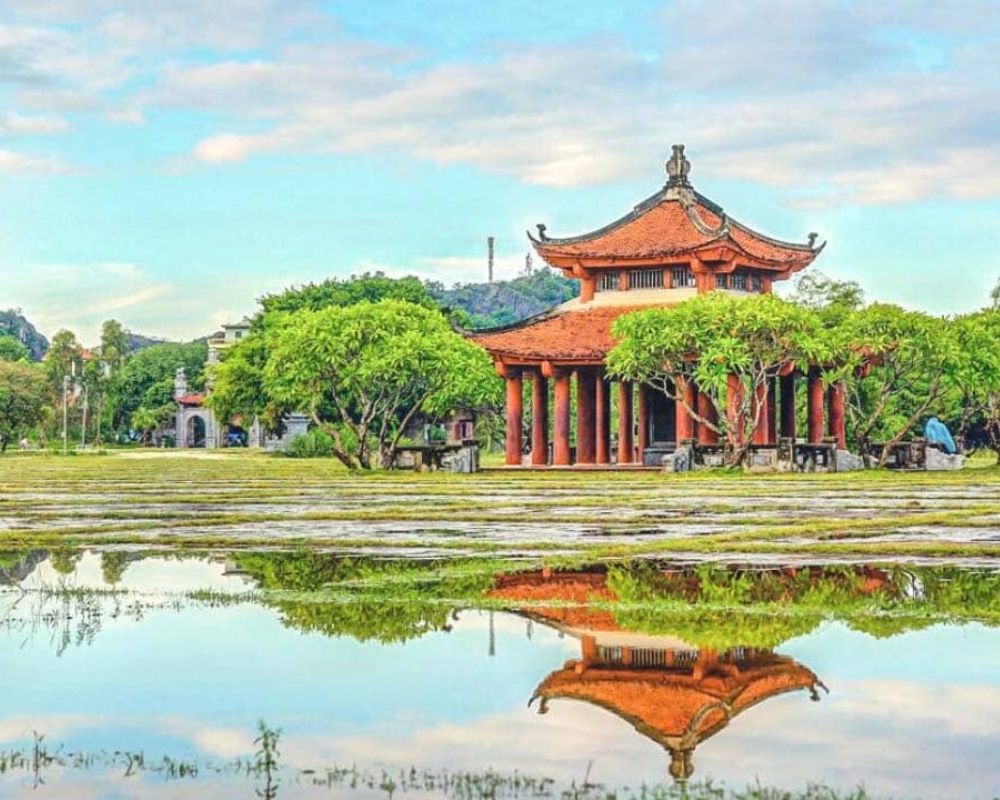
The ancient capital of Hoa Lu is a remarkable architectural complex in Ninh Binh province, recognized by UNESCO as one of the four core areas within the Trang An World Heritage Site. It is also designated by the state as an extremely important architectural complex and historical relic of national significance that requires utmost preservation.
With a history spanning over 1000 years, this place has witnessed numerous ups and downs, reflecting the vicissitudes of the nation’s history. It serves as a repository of historical relics from various eras and stands as historical evidence of our country through the ages. Despite enduring the passage of time, Hoa Lu still retains its historical traces, evident in its sturdy walls and two imposing temples dedicated to Kings Dinh Tien Hoang and Le Dai Hanh, which were constructed to resemble the ancient capital of Hoa Lu.
Best time to visit Hoa Lu Ancient Capital
You don’t actually have to pick the perfect time to explore Ninh Binh Hoa Lu. Every visit offers a fresh learning experience. However, according to Vietnamese residents, spring stands out as the optimal season for a trip to Hoa Lu due to the abundance of captivating festivals following the Lunar New Year celebrations.
Throughout the festival season, you can immerse yourself in the lively ambiance, sample traditional cuisine, and partake in enriching cultural events alongside the local community. Alternatively, if you prefer the tranquility of Hoa Lu, you can plan your visit for the quieter months.
Hoa Lu ancient capital entrance fee
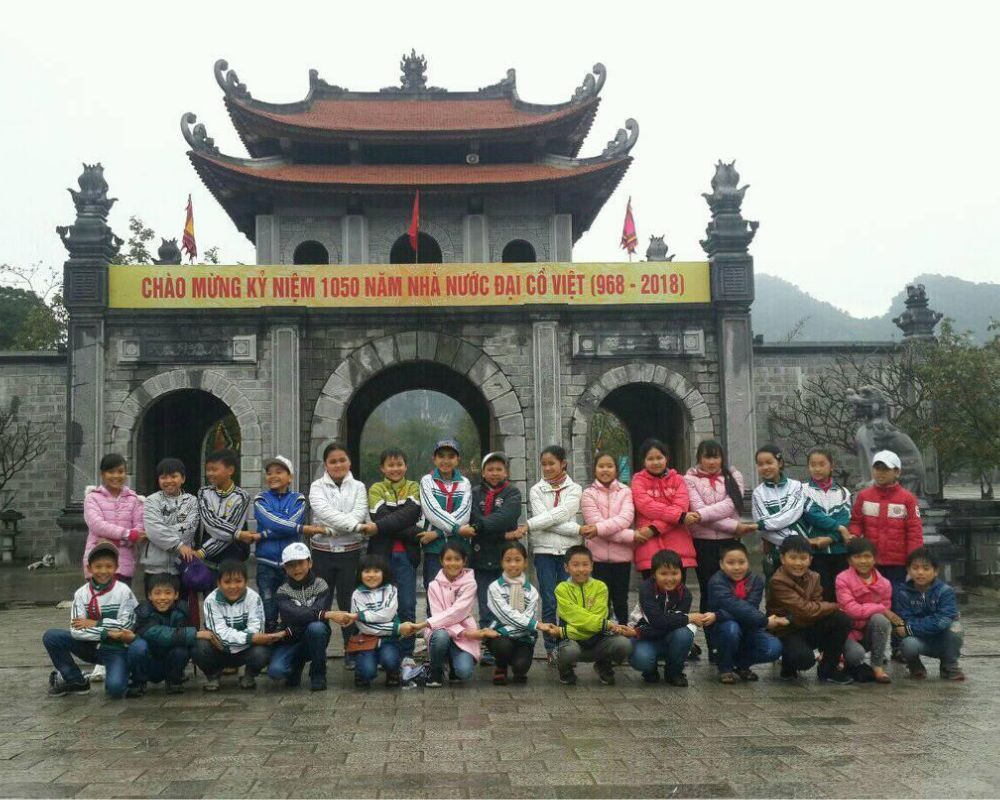
Hoa Lu was the first capital and the seat of power for the Dinh, Early Le, and Ly dynasties. Hoa Lu Ninh Binh ancient capital is a remarkably preserved architectural complex and a nationally significant historical relic of Vietnam. UNESCO also recognizes it as one of the four core areas within the Trang An World Heritage Site. The Historical Site of Hoa Lu Capital is located in Hoa Lu District, Ninh Binh Province. For inquiries, please contact +84 229 3620 099.
- Adults: 20,000 VND / Ticket
- Children over 1m2: 20,000 VND / Ticket
- Children under 1m2: Free of charge
Things to do in Ninh Binh ancient capital
Tam Coc – Bich Dong (Halong on land)
Embarking from Hoa Lu, a journey to Tam Coc – Bich Dong, a harmonious architectural ensemble, proves immensely enticing to travelers worldwide. Here, sprawling mountain vistas, breathtaking caves, and picturesque waterways winding through rice paddies, alongside the stunning Ngo Dong River, await.
Tam Coc–Bich Dong boasts four distinct seasons, each offering its own unique allure. Summer stands out as the most captivating season, as clouds dapple the sky, and verdant rice fields transform into fields of shimmering gold. Today, Tam Coc–Bich Dong is affectionately referred to as “Halong Bay on land,” owing to its captivating charm.
Taking part in the annual festivals
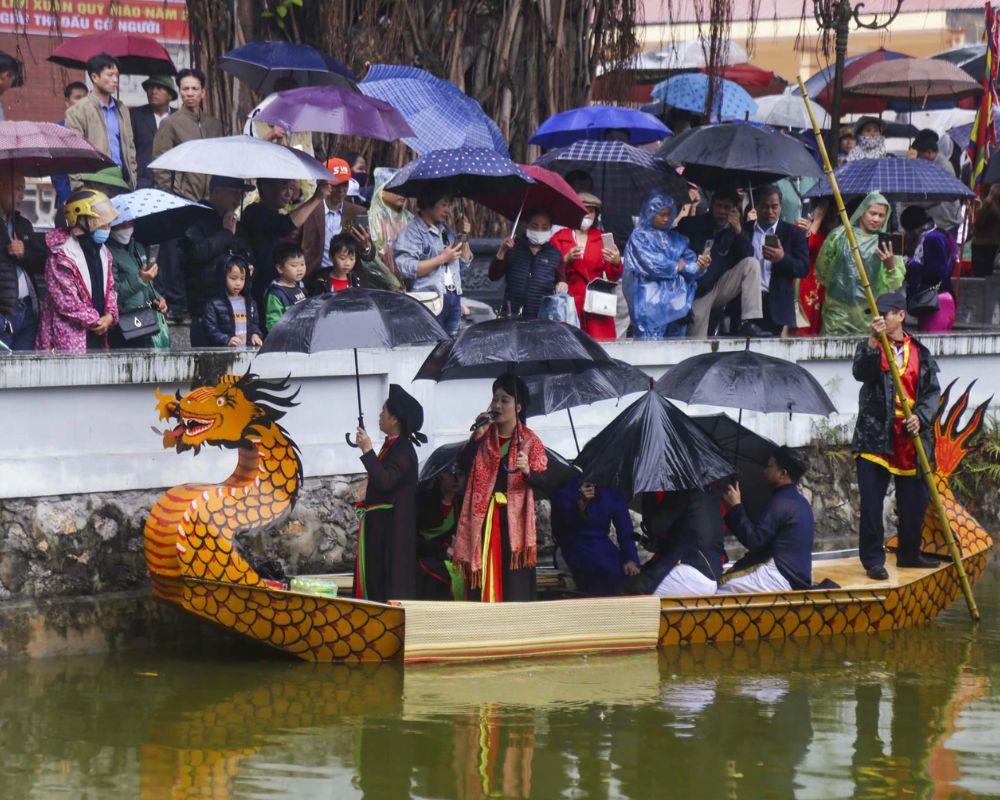
The primary and most significant festival is the Truong Yen Festival, occurring on the 10th day of the third lunar month, dedicated to honoring the Kings of the Dinh and Le dynasties, namely Dinh Tien Hoang and Le Dai Hanh. The festival comprises two main components: ceremonies at the Truong Yen water station along the Hoang Long River and rituals at the two kings’ temples.
Lasting for three days, the Truong Yen Festival features various entertainment activities such as the “Co lau tap tran” performance, Han script writing competitions, chess matches, dragon dances, and more. These traditional games not only amuse but also encapsulate the local legends vividly.
Hoa Lu Temple
As the capital of Vietnam’s first foundational dynasty, Hoa Lu Ninh Binh ancient capital, the cultural heart of Ninh Binh, has borne witness to numerous pivotal historical moments.
Hoa Lu is renowned for its four revered temples dedicated to the Gods of the four cardinal directions: Quy Minh Temple in the South, Nguyen Temple in the North, Thien Ton Temple in the East, and Cao Son Temple in the West. Visiting these temples to pay respects and offer incense honors the deities’ merits while offering insight into the locals’ spiritual life.
Am Tien Cave
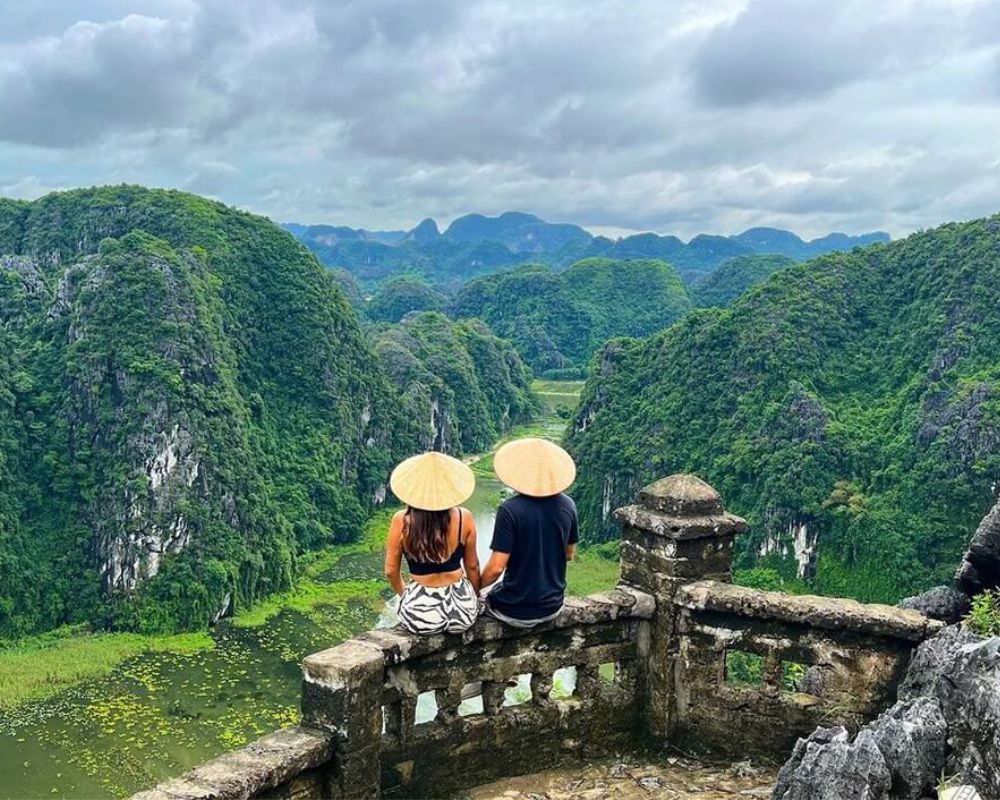
Am Tien Cave, also known as Tuyet Tinh Coc in Hoa Lu, stands not only as a majestic natural wonder but also as a culturally significant site with enduring value.
Tuyet Tinh Coc showcases a splendid fusion of lakes, mountains, and temples, captivating all who behold it. Visitors can marvel at the harmonious interplay of limestone peaks, serene lakes, and diverse ecosystems. The highlight, Ao Giai Lake, with its crystalline waters mirroring the surrounding mountains, provides an enchanting atmosphere where one can breathe in the pure air, relish the fragrance of nature, and listen to the symphony of life.
Means of transportation to Hoa Lu
From Hanoi to Ninh Binh, you can choose from the following transportation options:
Train: The ticket price for the Hanoi – Ninh Binh train ranges from 90,000 to over 200,000 VND depending on the train and seat type. Note that when purchasing train tickets, it’s advisable not to choose overly late departures as they may affect your schedule.
Bus: You can catch a bus from Giap Bat or My Dinh bus station to Ninh Binh, with ticket prices ranging from 50,000 to 60,000 VND per person. The average travel time is about 1 hour and 30 minutes. Make sure to communicate with the bus attendant beforehand, as they will guide you accordingly.
Motorbike: If you enjoy the freedom of riding a motorbike, you can start from the Phap Van – Cau Gie expressway and continue towards Cau Gie – Phu Ly – Ninh Binh, with a travel time of approximately 1 to 1.5 hours.
What to eat when visiting Hoa Lu Ninh Binh ancient capital?
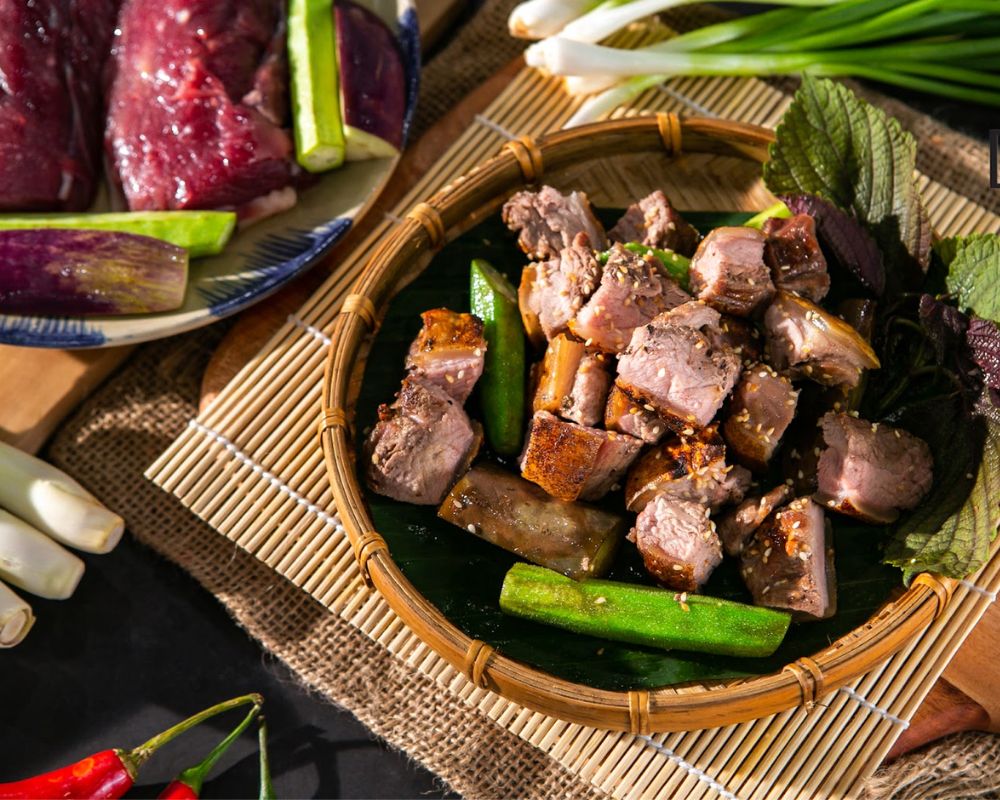
In addition to its historical relics and unique landscapes, the delicious eateries and restaurants brimming with the rustic culinary style of the Northern region are among the attractions for tourists visiting Hoa Lu, Ninh Binh. Let’s take a look at some dishes you must try when you’re here:
- Burnt rice: A renowned specialty of Ninh Binh. Each grain of rice is evenly crispy with a vibrant golden color, paired with a special sauce that keeps visitors craving for more without feeling overwhelmed.
- Mountain goat meat: Mountain goats in Ninh Binh are prepared into various enticing dishes such as goat with lime, steamed goat, goat spring rolls, raw goat blood pudding, and pickled plum. Not only are they delicious but also highly nutritious, beneficial for health.
- Mountain snails: The meat of mountain snails is chewy, crispy, and sweet, prepared in various ways: steamed with ginger, stir-fried with lemongrass and chili, or mixed in salads.
- Additionally, there are many other delicious dishes you can try such as Yen Mac spring rolls, eel vermicelli, Kim Son wine, and shrimp paste from Gia Vien.
Some Notes for Visitors
- Hoa Lu, Ninh Binh is a spiritual tourist destination, so visitors should dress modestly and respectfully. When visiting the temples of Kings Dinh and Le, it’s important to maintain a gentle and orderly demeanor to preserve the solemnity, and to light incense to express reverence to the kings who contributed to the nation.
- Follow the instructions of the heritage site management or tour guides if you’re traveling with a group.
- Dispose of trash properly, do not litter.
- If traveling independently, it’s advisable to check the map beforehand for a more convenient exploration of your journey.
Conclusion
As the sun sets over the tranquil landscape of Hoa Lu Ninh Binh ancient capital, it leaves behind a palette of colors that enrich the soul and inspire the imagination. This historic sanctuary, nestled among towering limestone cliffs and verdant fields, serves as a poignant reminder of Vietnam’s rich cultural heritage and architectural brilliance. Hoa Lu’s enduring legacy, characterized by its historical significance and natural beauty, continues to captivate and educate visitors from around the globe. It stands not merely as a relic of the past but as a symbol of resilience, a place where history and harmony converge, offering a unique glimpse into the heart of Vietnam.
Hoa Lu ancient capital FAQs
What is Hoa Lu ancient capital?
Hoa Lu was the capital of Vietnam during the Dinh and early Le Dynasties, from 968 to 1009 AD. It is located in the Ninh Binh province of Vietnam, known for its stunning natural landscapes, including limestone karsts and serene rivers. Today, Hoa Lu is a significant cultural and historical site, offering visitors a glimpse into Vietnam’s rich past.
Why is Hoa Lu Ninh Binh ancient capital important?
Hoa Lu holds historical significance as the first capital of a centralized feudal state in Vietnam. The establishment of Hoa Lu as the capital marked the end of a period of civil war and division, leading to the unification of the country. It is also important for its architectural remnants, which reflect the art and craftsmanship of ancient Vietnam.
What can I see in Hoa Lu ancient capital?
Visitors to Hoa Lu can explore the remains of ancient temples dedicated to Emperor Dinh Tien Hoang and Emperor Le Dai Hanh. These temples are notable for their intricate carvings and architectural design. Additionally, the site is surrounded by a stunning natural landscape, with limestone mountains and scenic waterways, making it a popular spot for sightseeing and photography.
How do I get to Hoa Lu ancient capital?
Hoa Lu is approximately 100 kilometers south of Hanoi. Visitors can travel to Hoa Lu by bus, motorbike, or car from Hanoi, which takes about 2 to 3 hours depending on the mode of transportation. Many tourists opt for organized tours, which often include visits to other attractions in Ninh Binh Province, such as Trang An and Tam Coc.
